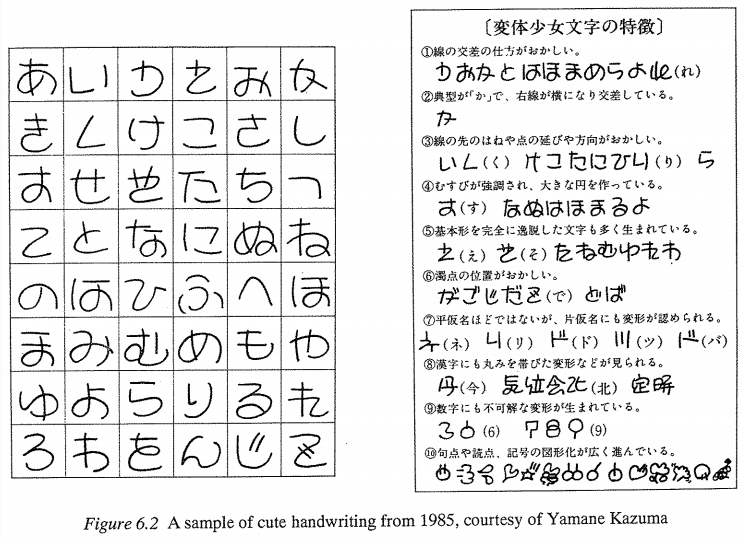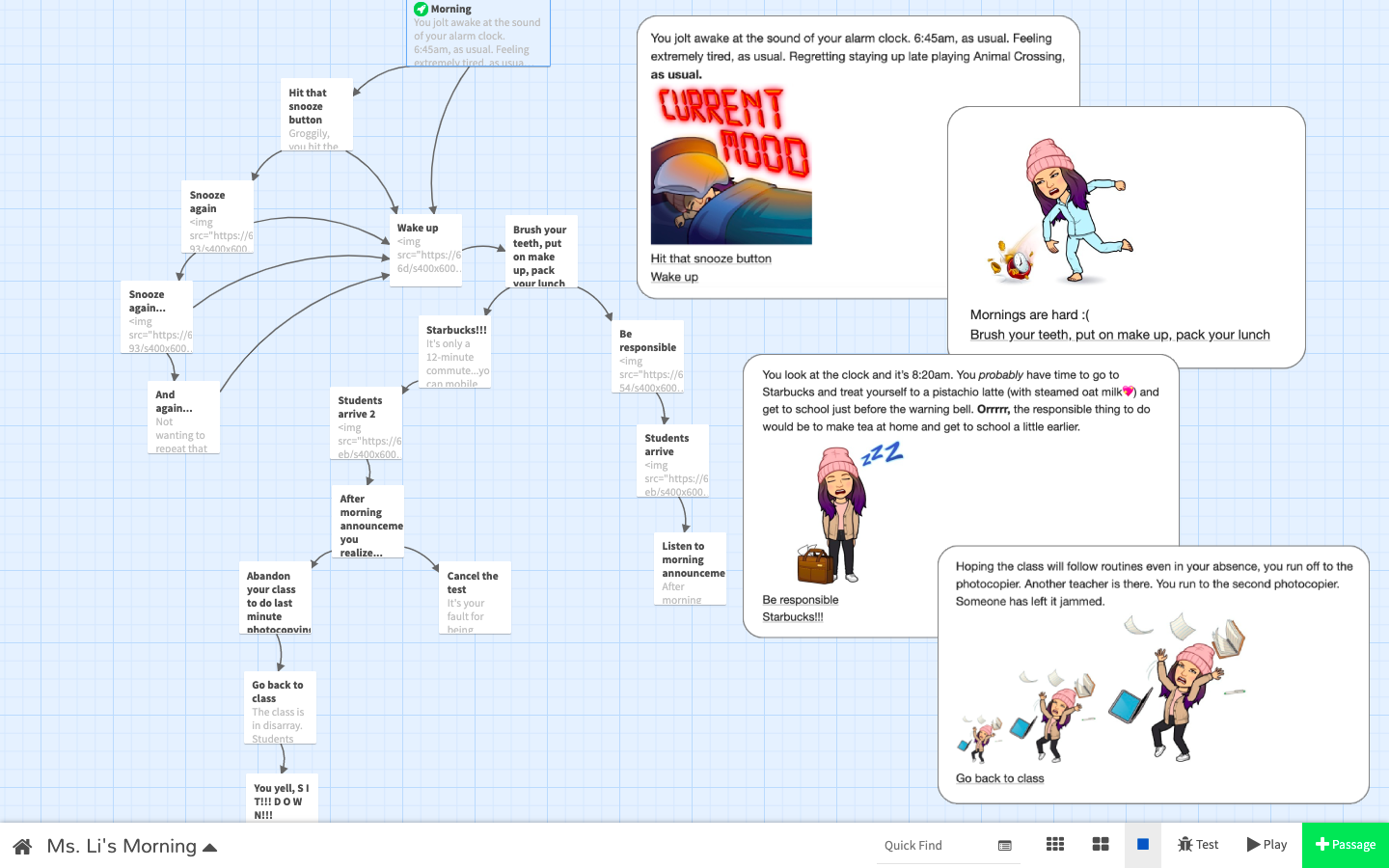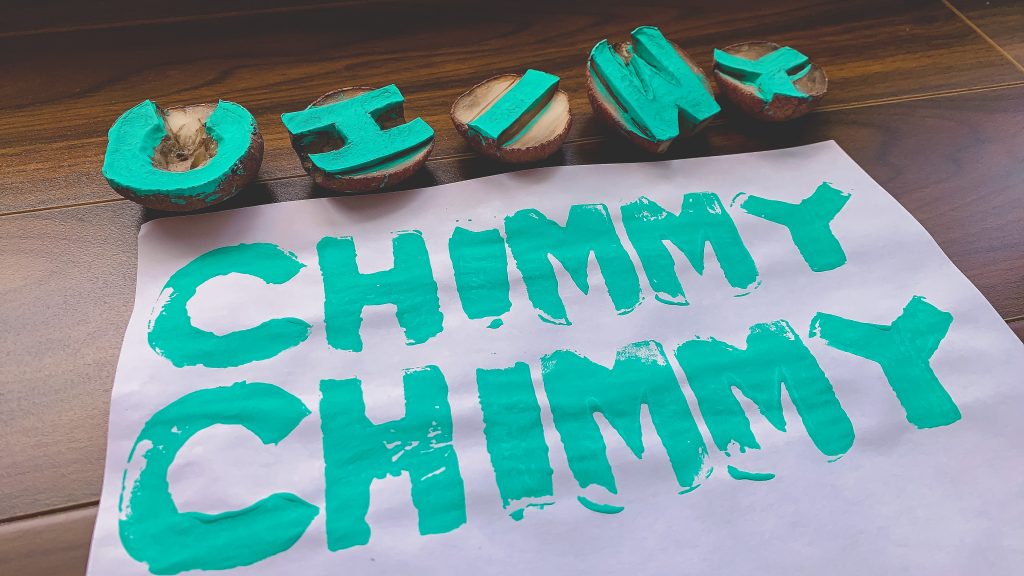Can you guess my movie?

I relied mostly on words and ideas when typing out my summary. I think the first line of the story might give it away with the assumption that you have a pretty good knowledge of western movies for kids. I started with the title, subconsciously, because it has been drilled in my head that most pieces of writing start with a title. The first thing I type into this blogpost is a title. When I get my students to take math notes, I always start with the title of the chapter.
I chose this work because it is one of my favourite movies. As well, I thought it would be the easiest to convey my ideas across. After all, not many movies are centred around ![]() . Had I picked an Avengers movie, not only is the plot complicated (as it links to a variety of other movies in the franchise, and trying to chase down all those plot lines might end up in me going down another Twine rabbit-hole), but the emojis available are limiting. A “man” emoji could represent so many things, so many movies! Bolter (2001) identifies this challenge with pictures: they “extend over a broad range of verbal meanings: each element means too much rather than too little” (p. 59). However, this movie wasn’t as straightforward as I assumed and I had to resort to being a little creative with some of my emoji use (e.g., there’s only one type of lion available!).
. Had I picked an Avengers movie, not only is the plot complicated (as it links to a variety of other movies in the franchise, and trying to chase down all those plot lines might end up in me going down another Twine rabbit-hole), but the emojis available are limiting. A “man” emoji could represent so many things, so many movies! Bolter (2001) identifies this challenge with pictures: they “extend over a broad range of verbal meanings: each element means too much rather than too little” (p. 59). However, this movie wasn’t as straightforward as I assumed and I had to resort to being a little creative with some of my emoji use (e.g., there’s only one type of lion available!).
Bolter considers picture writing to be “constructed culturally [even today] as closer to the reader, because it does not depend upon the intermediary of spoken language and seems to reproduce places and events directly” (p. 59). Extending this to the use of emojis, as discussed in last week’s readings, Zaltzman’s (2019) podcast succinctly touches on the culture surrounding emojis. There needs to be a mutual interpretation of specific emojis in order for its intended meaning to be understood (7:48). As such, this type of picture writing does depend on the spoken language. The way emojis are used differ depending on your relationship to the internet and how you use it. For my parents, emojis are quite simple and they use probably 10% of the entire emoji keyboard, sticking to the obvious ones. So yes, Bolter is right on the money on that one. But what about these?

I have to rely on text to provide the context. I have to rely on my friend understanding that those eyes are saying, “side-eyeing” and “I’m judging you” and not “look over there”. These emojis arose out of internet meme use and conversations, and their meanings and usage will fade as others will come to replace it.
In the 1970’s, ‘kawaii printing’ rose to popularity in Japan, eventually paving the way for kawaii culture. Kinsella (1995) describes this ‘cute’ new style as using round characters, little cartoon hearts, stars, and faces randomly inserted into texts (p. 222).
 From ‘Cuties in Japan’ by Kinsella (1995)
From ‘Cuties in Japan’ by Kinsella (1995)
Kawaii printing seems harmless, but through this young girls have taken the written language—something Kinsella considers to be the “lynch pin of Japanese culture”—made it their own, and fostered their own relationship with text (p. 222). Surely it wasn’t harmless. At least not to adults and authority figures in school, who had to take extreme measures to ban an entire writing style because it rendered printing nearly impossible to read. Instead of its functional use, text became decorative and personal. Back to Bolter, he states that “picture writing lacks narrative power” (p. 59). While ‘kawaii printing’ isn’t strictly considered picture writing as it is based on katakana and hiragana, its cutesy decorations have transformed text into picture, one that is powerful and certainly has the power to tell its own narrative.
Instead of “text [gathering] around the image and [supervising] its reading,” it has become the other way around (Bolter, 2001, p. 49). As someone who has an extensive meme folder on her phone, had entire conversations with just .gifs, and certainly am very liberal with emojis in every day texts, picture writing seems to be my spoken language these days.
References
Bolter, J.D. (2001). Writing Space: Computers, hypertext, and the remediation of print. Mahway, NJ: Lawrence Erlbaum Associates, pp. 47-76.
Kinsella, S. (1995). Cuties in Japan. In B. Moeran & L. Skov (Eds.), Women, media and consumption in Japan (pp. 230-264). Routledge. https://doi.org/10.4324/9781315026312-13
Zaltzman, H. (Host). (2019, July 13). New rules (No. 102) [Audio podcast episode]. In The Allusionist. https://www.theallusionist.org/allusionist/new-rules



